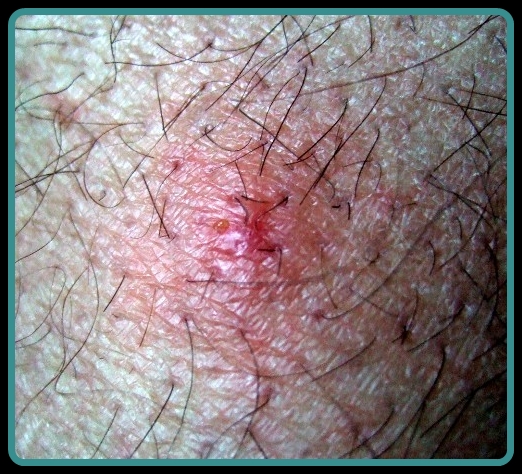“Dedicated to finding effective solutions for bird mite infestations of humans and their environment, encouraging those afflicted, facilitating research and a better understanding of human parasitosis.”
Bird Mite Infestation…
Who…people with a bird’s nest near the home, apartment dwellers with nesting pigeons, people with pets or other animals which are infested, farmers who raise chickens, people who obtain used furniture, carpet, clothing, etc, that has been infested. This can also include guests of hotels, office workers et al., when the buildings are inhabited by nesting birds.
What…parasitic infestation from bird mites too small to be easily seen without magnification. Symptoms include pinprick bites, often intense itching with or without lesions, small reddened bumps, and a crawling sensation anywhere on the body; with increased activity at night. Some people label these the “creepy crawlies” or “nose ticklers”. The intense itching and irritation on the skin is due to the mite’s saliva. When a large area is covered with bites it will resemble a rash in appearance, and it is often mistaken for scabies.
Possible Bird Mite Infestation?
- Pinprick bites with or without lesions
- Frequently intense itching of the skin
- Vague sensation of crawling on the skin
- Bite marks and lesions that heal very slowly
- Increase of symptoms in certain areas of the home
- Increase of symptoms at night and in humid weather
- Physician suspects scabies but the treatment does not help
Where…bird mites more commonly infest bedrooms and bathrooms, but will quickly infest the whole house. Mites will infest carpeting, bedding, upholstered furniture, clothing, etc. They hide in cracks, crevices and darkened areas in the home when not active. They tend to congregate where humans routinely are; such as near the computer, in automobiles, etc.
When…bird mites are most active from dusk till dawn, but can be active at other times, especially when disturbed. Bird mites are very disruptive to our normal sleep pattern, causing many nights of lost sleep. They tend to be more active on damp, humid, overcast days and nights. Mites are less active during daylight hours, and they are less active on hot, dry, sunny days. Increased activity every seven days or so, when the new mites will mature. Mite activity also tends to increase around a full moon. Bird mite populations tend to peak in the late spring and summer, corresponding to an increase in the bird population and an increase in temperature and humidity levels.
Why…bird mites are parasites they feed on living organisms; the female mite needs blood to reproduce. They are attracted to mammals by receptors for moisture, heat and CO2. They are aggressive and they often bite humans when their original food source has gone; as when the young birds leave the nest. They can quickly multiply into thousands, leaving the afflicted person with the feeling of being overwhelmed. Once a home is heavily infested, they are very difficult to fully eradicate.
Close-up image of a bird mite bite mark on a human leg, with the typical bulls eye characteristics. The outer band is typically about .25 inch across and the raised, reddened center is about .1 inch. Although similar in size to a large mosquito bite, a mite bite typically takes much longer to heal.
Recommended Treatment Provider
We recommend you use a licensed professional to address a bird mite problem. Don’t wait or the problem will get much worse and more expensive to treat. We have a list of pest control companies that are specifically qualified to treat bird mites.
- They come to your house for no charge and give a free estimate.
- Even if you decide not to use them, you get free professional advice.
- Most pest control companies have never dealt with bird mites before. You need to use a bird mite specialist.
Follow this link to find a Qualified Local Exterminator near you.
Keep in mind that if bird mites are not treated correctly, even if the correct chemicals are used, they can become resistant to those chemicals. Don’t use a pest control company unless they have extensive experience treating bird mites.
Also, many of our readers have followed up with (or used outright) natural solutions and pesticide-free, such as on our Treatments Protocols page Follow this link to that page.
Natural and DIY Solutions
In addition to local exterminators, we offer a list of other natural, non-pesticide and/or do-it-yourself products that we have found helpful on our Treatments Protocol page. Follow this link to the Treatments Protocols page.
Birdmites.org fully supports the premise that parasitic bird mites can adapt and survive in a human environment when the original avian host is no longer viable. There is plenty of anecdotal evidence to support this from those who have been afflicted for many years; long after the original source of infestation was identified and removed. And medical research has shown that parasitic acaroid mites do survive in a human environment. We encourage further research and understanding of bird mite acariasis






